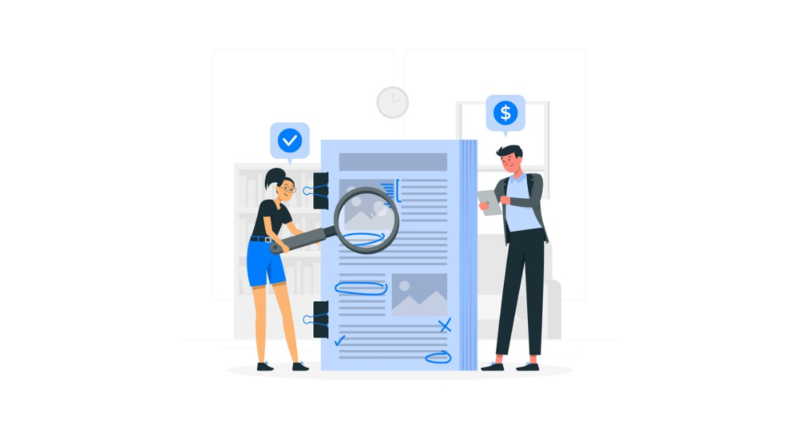How to Audit Sensitive Documents for Access Risks
In today’s digital age, sensitive documents are the lifeblood of many organizations, containing critical information such as financial records, customer data, and intellectual property. However, with the rise of cyber threats, it’s essential to audit these documents regularly to mitigate access risks and protect sensitive information.
Understanding Sensitive Documents
What Are Sensitive Documents?
Sensitive documents refer to any information or files that, if accessed by unauthorized individuals, could cause harm to an organization or its stakeholders. This includes confidential reports, employee records, legal documents, and more.
Importance of Securing Sensitive Documents
Securing sensitive documents is crucial to maintaining the trust of customers, safeguarding intellectual property, and complying with regulations such as GDPR and HIPAA. Failure to protect these documents can result in reputational damage, financial losses, and legal consequences.
Access Risks Associated with Sensitive Documents
One of the primary risks associated with sensitive documents is unauthorized access. This can occur due to weak access controls, insider threats, or external cyber-attacks. Unauthorized access can lead to data breaches and compromise the confidentiality of sensitive information.
Data Breaches
A data breach involving sensitive documents can have devastating consequences for an organization, including financial losses, legal liabilities, and damage to its reputation. It’s essential to audit documents regularly to detect and prevent potential breaches.
Compliance Violations
Failure to secure sensitive documents can also result in compliance violations, leading to fines, penalties, and other legal repercussions. Auditing documents helps ensure compliance with industry regulations and data protection laws.
Steps to Audit Sensitive Documents
Identify Sensitive Documents
The first step in auditing sensitive documents is to identify what information qualifies as sensitive. This includes analyzing the type of data stored, its sensitivity level, and who should have access to it.
Assess Current Access Controls
Once sensitive documents are identified, it’s crucial to assess the current access controls in place. This involves reviewing user permissions, role-based access controls, and any other mechanisms used to restrict access to sensitive information.
Determine Access Levels
Next, determine the appropriate access levels for each sensitive document based on job roles, responsibilities, and the principle of least privilege. Limiting access to only those who need it reduces the risk of unauthorized exposure.
Review Access Logs
Regularly reviewing access logs allows organizations to monitor who has accessed sensitive documents, when they accessed them, and what actions they performed. This helps identify any suspicious activity and ensures compliance with security policies.
Tools for Document Auditing
Access Management Software
Access management software provides centralized control over user access to sensitive documents, allowing administrators to enforce security policies and monitor user activity in real time.
Data Loss Prevention (DLP) Solutions
DLP solutions help prevent the unauthorized disclosure of sensitive information by monitoring and blocking the transmission of sensitive documents outside the organization’s network.
Encryption Technologies
Encrypting sensitive documents adds an extra layer of security by converting the information into unreadable code, making it inaccessible to unauthorized individuals even if they gain access to the file.
Best Practices for Document Auditing
Regular Reviews
Regular audits of sensitive documents ensure access controls remain effective and up-to-date. This includes reviewing user permissions, access logs, and security policies on a scheduled basis.
Employee Training
Educating employees about the importance of securing sensitive documents and how to follow security protocols helps prevent accidental data breaches and insider threats.
Implementing the Principle of Least Privilege
Following the principle of least privilege ensures that users only have access to the information necessary to perform their job functions, reducing the risk of unauthorized access and data exposure.
Conclusion
Auditing sensitive documents is essential for protecting valuable information, maintaining compliance with regulations, and mitigating access risks. By following best practices and utilizing the right tools, organizations can ensure the security and integrity of their sensitive documents.
FAQs
1. What are some common examples of sensitive documents?
Sensitive documents can include financial reports, customer databases, legal contracts, and intellectual property.
2. Why is auditing sensitive documents important?
Auditing sensitive documents helps detect and prevent unauthorized access, data breaches, and compliance violations.
3. What tools can organizations use to audit sensitive documents?
Organizations can use access management software, data loss prevention (DLP) solutions, and encryption technologies for document auditing.
4. How often should organizations audit sensitive documents?
Organizations should conduct regular audits of sensitive documents, typically on a quarterly or annual basis, to ensure security and compliance.
5. What are some best practices for securing sensitive documents?
Best practices include implementing access controls, regular employee training, and following the principle of least privilege.




